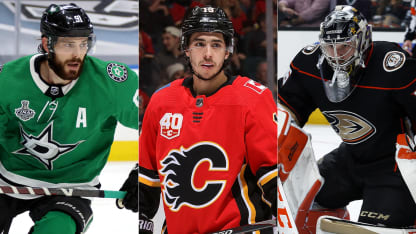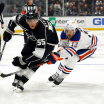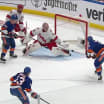The center scored 50 points (17 goals, 33 assists) in 69 games last season and 13 points (two goals, 11 assists) in 26 games in the postseason, with the Stars making it to Game 6 of the Final before losing to the Tampa Bay Lightning. Seguin scored 40 goals in 2017-18 and 33 goals in 2018-19. He played fewer games last season because of the pause but saw his goals-per-game average decline from 0.45 combined in 2017-18 and 2018-19 to 0.25 last season. What caused the drop-off? Seguin's shooting percentage (6.9 percent) was the lowest of his 10 seasons in the League. On the power play last season, he had a 5.0 percent shooting percentage, his lowest since he joined the Stars prior to the 2013-14 season after a trade from the Boston Bruins. After scoring 23 power-play goals from 2017-19, he scored three last season. Seguin was hampered by injury last season and will have offseason surgery on his hip. He also played through a knee injury in the postseason, which could have affected his goal total. The Stars had a 5-on-5 shooting percentage of 6.7 percent during the regular season, which was 29th in the NHL. In the postseason, their 5-on-5 shooting percentage increased to 8.7 percent, which tied for fifth with the Philadelphia Flyers among teams to play at least five games. If the Stars' improved 5-on-5 shooting carries over to this season and Seguin, who could miss the first two months -- he is expected to have surgery next week and need four months to recover, with the season targeted to begin Jan. 1, 2021 -- is healthy, he should see a natural increase in goals.


















